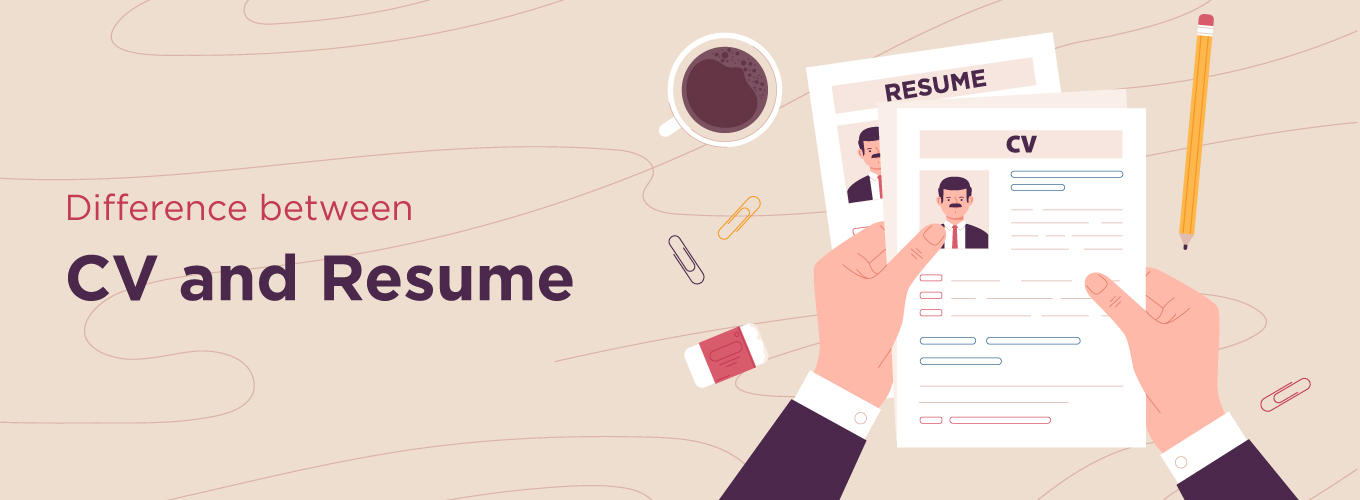



Introduction
Among the specific misconceptions that candidates for job positions have, understanding the difference between a CV and a Resume is the most common. Although both documents are meant to display skills, qualifications, and experiences, the documents differ by purpose, length, and format. Understanding when to use a CV or a Resume is really helpful.
What is a CV?
A CV (Curriculum Vitae) is a more detailed document that a job candidate prepares in comparison to a Resume. It elaborates on what the candidate has done academically and professionally, and highlights core competencies, accomplishments, and attributes. It is lengthier and goes into more depth than a resume.
Key Features of a CV:
Length: Typically 2–3 pages or more, depending on experience.
Content: Includes detailed educational history, research, publications, certifications, achievements, work history, and skills.
Purpose: Commonly used for academic, research, medical, and international job applications.
Scope: Covers the entire career history of the candidate.
What is a Resume?
A resume is a shortened document that outlines an applicant’s skills, work, and educational experience relevant to a particular role. It is also less extensive than a CV and is customized for each vacancy being applied for.
Key features of a resume.
Length: Generally 1 page. This could extend to 2 pages.
Content: Relevant work experience, skills, and accomplishments.
Purpose: to be used for applications in business and industry jobs.
Scope: Only relevant and most recent experiences will be highlighted.
When to use a CV or a resume
Use a CV for an academic, research, or international opportunity that requires a comprehensive background.
Use a Resume for roles in the private sector, business, and corporate environments, which require brief and focused information.
Guidelines for Writing a CV and Resume
CV Guidelines:
Resume Guidelines:
CV and Resume FAQs
Q1: What does CV stand for?
A: CV is Curriculum Vitae, which is Latin for 'course of life'.
Q2: Which is better for job applications – CV or Resume?
A: That depends on the position. Corporate jobs typically ask for resumes, and CVs are needed for academic and research jobs.
Q3: Can I use the same CV/Resume for all jobs?
A: This is a no. A Resume should be tailored for each position, while a CV can remain mostly the same; it should still be current.
Q4: Why is a resume shorter than a CV?
A: A resume signifies a short description geared towards a specific job, while a CV is a comprehensive career history.
Q5: Do companies in India prefer CVs or Resumes?
A: Most companies in India prefer Resumes for corporate roles. CVs are usually asked for academic and research profiles.
6: Can freshers use resumes?
A: Yes. Freshers should prepare resumes highlighting education, internships, skills, and projects.
7: Is a CV or a Resume used for abroad jobs?
A: In the US and Canada, the preferred document is a resume, whereas in Europe, the Middle East, or jobs in academia, the more common term is CV.
Conclusion
While both CVs and resumes are crucial components of a job application, they do not serve the same functions. A CV outlines every detail of your journey, whereas a Resume summarizes the most pertinent details to a specific job you are applying for. Knowing the distinction between the two will allow you to portray your most relevant self to different employers.
At Jobkosha, we assist candidates in developing professional CVs and resumes that are aligned with job targets for higher chances of positive outcomes.